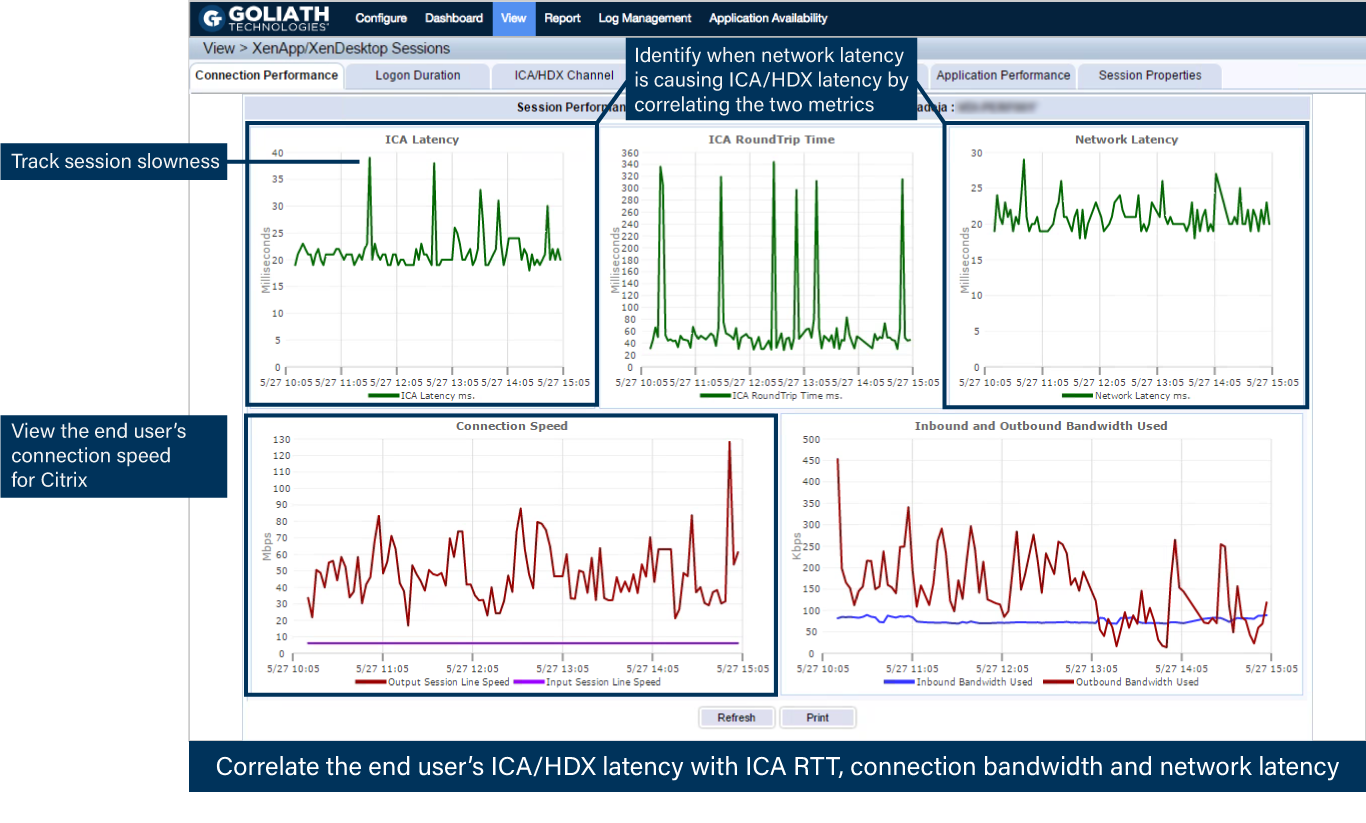Penn National Insurance improves the remote worker end user experience with Goliath Technologies.
Goliath proactively troubleshoots end user experience issues with Citrix XenDesktop, Cisco softphones and IGEL Endpoints.
Infrastructure: Citrix XenDesktop; IGEL Endpoint; VMware vSphere; Cisco IP Communicator (softphone)
Challenge:
Penn National Insurance needed to adapt to its growing remote workforce and deliver a seamless user experience to increase employee satisfaction, performance and productivity.
In response, the IT team rolled out its virtual workspace initiative, proving to be one of its most challenging IT projects. The Penn National Insurance IT team had to work across multiple technologies including IGEL, Cisco and Citrix and contend with each unique environment – home office, remote office or coffee shops – where their employees were connecting and provide a consistent end user experience.
An inherent issue with the virtual workspace initiative is the need rely and manage multiple vendors to enable this remote worker lifestyle. Penn National wanted to be able to proactively monitor, manage and troubleshoot all of the elements across the overall delivery infrastructure including IGEL Endpoint, Cisco IP Communicator (softphones) and various connection methodologies whether it is WIFI, satellite or hardwired phone lines, Citrix XenDesktop and VMware vSphere.
“We wanted to provide one unified experience to all users regardless of their device, locations or type of connection as part of the virtual workspace initiative,” said Dan Morrison, Director IT I&O, Penn National Insurance
Challenge example: An employee is calling in from their home office using an IGEL Endpoint, Cisco IP Communicator (softphone) and utilizing a connection which can be anything from a hard line, satellite to WIFI. Given all these moving parts, Penn National needed a way to anticipate and be alerted to issues, for example, connection speed being slow and or overall session latency being high, before or at the same time as the employee. Then, they needed to be able to troubleshoot the issue down to the root cause.
“We wanted to see all of the delivery infrastructure subsystems and monitor them proactively from a single pane of glass so we could anticipate end user experience issues and troubleshoot them quickly when they arise,” said Morrison.
Solution:
The Penn National IT team knew they were in a distributed IT environment that would present ongoing challenges. They had exhausted the functionality of the free tools from Citrix Director and Citrix MAS so Mike Watts, vice president of IT, Penn National Insurance, began the search and internal justification for a purpose-built product that would help them get ahead of end user experience issues and then resolve them quickly. Watts installed the Goliath Technologies software in a few hours. The initial impression was very positive because they could see the entire Citrix XenDesktop delivery infrastructure and subsystems in a single view as seen in the screenshot of our Topology views below:
The above view offered Penn National Insurance the ability to see the whole environment at a glance but the real value was realized when they began to troubleshoot an issue. In one situation they had a remote user complaining about session slowness. According to Watts, “this user was connecting Citrix XenDesktop and using IGEL Endpoints. Using the ICA and HDX drilldown from the session display, seen in the screenshot below, I could see that the issue was one of connection speed and therefore the issue was from the house to the data center. I further investigated and found that the WIFI was overloaded with users while the employee was attempting to use the Cisco smartphone so it couldn’t handle the voice payload. She had others stop using the internet and she was able to restore her voice performance.”
The technology also allows IT to look at latency trends and actual latency metrics in real time. According to Dan Morrison, Director of IT I&O at Penn National, “I can simply sort the session display by latency length and receive alerts to high latency. Then if the see high collective latency I know it is inside the data center and if it is just a handful of users I know it is outside the data center. Just this disqualification is huge for us and cuts down on massive time wasted looking for where an issue might be. I use Goliath literally all the time and I am in the software multiple times a day.”
“In one situation we were called by an employee who was working from home and complained about slow logon times. In less than 5 minutes, we were able to consult the Goliath product and determine through deductive reasoning that the issue was in the home environment. From there we determined her computer was also updating at the same time which was the root cause. She rebooted and everything was fine said,” Morrison.
“It’s easy to use 25-30% of what a solution can do but with Goliath we are constantly in that product. It provides too much value that we can never set it aside. The ability to see all our cross-platform products in one tool and to quickly have true visibility into the issue to guide expectations and meaningful conversations with our end users is priceless.” Mark Keefer, Senior Infrastructure System Administrator, Penn National Insurance.


